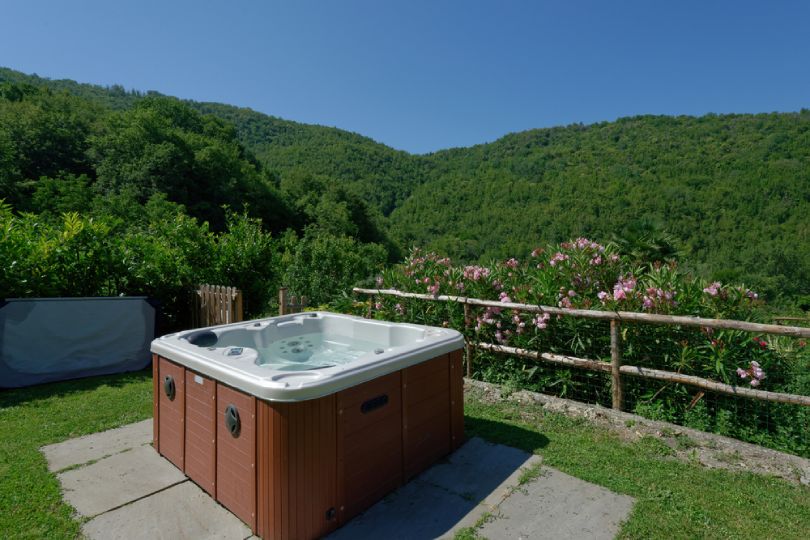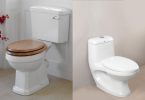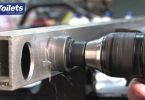As soon as you have acquired a hot tub, you will need to install it. Hot tubs should be leveled properly for a perfect installation. The problem is that many new hot tub owners are unclear about balancing, and many have no idea how to do it?
It is not difficult to level a hot tub, but it is imperative to the proper function ing of the spa. Keep reading to learn how to balance your spa on an uneven surface.
How to Level a Hot Tub: 7 Different Ways
Method 1: Use a spa or a hot tub leveler
Step 1: Gather tools
- A hot tub or spa leveler
Step 2: The hot tub needs to be moved away from the installation area
Step 3: Put the leveler at the right placement
Step 4: Now you can reinstall the tub on the new leveled space
Pros
- Portable so it can be moved easily
- Easily available
- Perfect for those areas that are out an inch or more
Cons
- The purchasing cost is higher than other types, roughly around $600 plus shipping.
Method 2: Use pavers
Step 1: Gather tools
- Sand and pavers
Step 2: Choose the pavers size, then identify the area where the hot tub is
Step 3: Make a smooth bed of sand to the size dimensions of the hot tub
Step 4: Ensure the sand bed is level and compact
Step 5: Place down the pavers and ensure they are level
Step 6: Now, you can install the tub over the paving
Pros
- More support comes with high-density materials
- Low absorption
- Won’t cause salt scaling
- Readily available in different colors
Cons
- Can sometimes cause stress to the exterior of the tub
Method 3: Use plastic shims
Step 1: Gather tools
- Good quality plastic shims
Step 2: Find the sloppy, uneven area under your tub
Step 3: Make sure all the water has been drained
Step 4: The plastic shims need to be under the hot tub on the lowest side
Step 5: Place the plastic shims on the sloppy areas at regular intervals
Pros
- Readily available
- Affordable
- Easy to install
- Pressure resistant
Cons
- Won’t work properly if the slope happens to be more than an inch off
- Only certain hot tubs can use them
- Not recommended by many manufacturers for leveling hot tubs
Method 4: Use a wooden platform
Step 1: Gather tools
- Pressure-treated boards 2×4
- Sheet of exterior plywood
- Cutting tool
Step 2: Move the hot tub out
Step 3: Cut the boards to suit the slope shape
Step 4: Place these on the slope area
Step 5: Attach the plywood to the boards
Step 6: cut the extra wedges
Step 7: Place the hot tub back into the leveled area
Pros
- Budget-friendly
- Solid platform for leveling
- Easy installation
- Readily available
Cons
- Doesn’t work well for areas more than an inch off
Method 5: Level on concrete
Step 1: Gather tools
- Mixed up concrete
- Shims
Step 2: Empty the hot tub
Step 3: Use shims if the slope is less than 1 inch. Shims cannot be used if the slope is more than that.
Step 4: Use spa-level if the spa is out more than 1 inch
Pros
- Solid level area
- Won’t deteriorate
Cons
- Can be expensive
- Can be difficult for those not familiar with installing concrete
Method 6: Build a customized pad
Step 1: Gather tools
- Wood
- Sand
- Your design
Step 2: Take measurements of the area and drain the spa
Step 3: Move the spa of the area you are working on
Step 4: Create a customized pad design for the spa
Step 5: Make your cuts and join everything together
Step 6: If you haven’t used marine wood, then seal the wood to avoid water damage
Step 7: Put your creation together
Step 8: Place your tub onto its new pad and enjoy!
Pros
- Design it how you want
- Use the products you want
- You can make it affordable
Cons
- Difficult if you don’t have carpentry skills
- It might be hard for some to create a design from scratch
- Time-consuming
Method 7: Build a box
Step 1: Gather tools
- 2 x 4 lumber pressure treated
Step 2: Create a box with the lumber. It needs to be 1 inch wider than the base of your hot tub.
Step 3: The wood needs to be tapered and ripped on the bottom. This will make the boards on the top level all around.
Step 4: Fill the box up with sand or gravel once you have it installed at the site. Fill it until it is an inch from the top.
Step 5: Paint or stain if you want it to match the color of the base.
Pros
- Affordable
- Easy to make
- Quick process
Cons
- It can be difficult without carpentry skills
- Gravel needed can be costly
How to Level a Hot Tub on Sloped Concrete
Step 1: Gather tools
- Safety goggles
- Chemical cleaner
- Scrubber brush
- Vegetable oil
- Frame made from lumbar boards
- Paintbrush
- Boning agent
- Wooden stakes
Step 2: Put your gloves and safety goggles on.
Step 3: Clean the concrete already there with a cleaner
Step 4: Use a power washer to remove dirt or a power jet hose
Step 5: You need a wooden frame made with 2 x 8 lumber boards nailed together. You should use two-inch nails. Build this around the concrete
Step 6: Spray the inside of the boards with vegetable oil, so there is no sticking when the leveling compound is used.
Step 7: Use wooden stakes at 2 feet apart on the outside of the boards to hold them in place.
Step 8: Prepare the concrete bonding agent and ensure you dilute it as per instructions
Step 9: Apply the bonding agent to the concrete with a paintbrush
Step 10: mix up the concrete as per instructions and apply it
Step 11: smooth with a trowel and allow to dry completely
What happens if you don’t level your hot tub?
You might crack the spa
Excess pressure can build up in concentrated spots if the hot tub isn’t level; this pressure is greater than the frame and shell can withstand.
So, you may get cracks in the acrylic shell or a stress fracture in the frame under the shell over time.
You might need to repair the tub
If your hot tub’s shell is damaged and cracked, the tub cannot be used until it is repaired. Unfortunately, the repairs can be quite costly.
FAQs
1. What is the minimum amount of flatness required for a hot tub base?
Ans. It won’t affect the performance or structure of your spa if the pad is slightly slanted. The slope in an 8′(2.44m) run should not exceed 1″ (1.27cm).
2. What’s the maximum slope for a hot tub?
Ans. A hot tub cannot be installed on a slope greater than half an inch.
3. Can I set a hot tub on sand?
Ans. No, not on its own. As a result of this choice, the foundation must be stable and not prone to shifting. Sand or gravel can be used underneath the pad for leveling the surface.








Leave a Comment